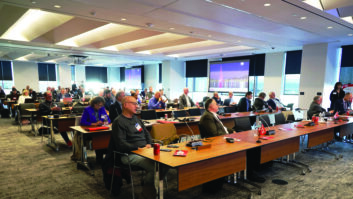
This week, CNN’s Brian Stelter criticized a broadcast group owner’s attempts to solicit audience feedback. Is he right? And how can community media outlets more engage audiences about the quality of content?
Stelter, among CNN’s stable of pundits, fired at Sinclair Broadcast on Wednesday. The media giant launched an on-air campaign aimed at trust and audiences. According to Stelter, local news anchors were given scripts that said, in part, “I’m [we are] extremely proud of the quality, balanced journalism that [proper news brand name of local station] produces. But I’m [we are] concerned about the troubling trend of irresponsible, one-sided news stories plaguing our country. The sharing of biased and false news has become all too common on social media. More alarming, national media outlets are publishing these same fake stories without checking facts first. Unfortunately, some members of the national media are using their platforms to push their own personal bias and agenda to control ‘exactly what people think.’”
Although the CNN host seems to come unglued about this suggestion, media bias is hardly a controversial subject. Americans’ skepticism of coverage is well documented. Public media has long had this conversation about addressing political bias in its journalism. FiveThirtyEight this week tackled the deepening divide over the media and opinion in reporting. Donald Trump was successful in going at CNN during the 2016 presidential race over perceptions powerful media actors wanted Hillary Clinton to win. And the charge resonated enough to blunt attacks on Trump. The phrase “fake news,” for better or worse, is mainstream.
You can kill the messenger, if you are one of those folks who dismiss Sinclair over its reportedly conservative tilt. However, the message remains clear, no matter who says it: the public has a distrust of the media and believes journalists do not do the best jobs they can in telling the story. Now, if that is the reality, how can community media spark a new discussion here?
Different community radio stations have a range of unique communities, considerations and stakes when it comes to your region. It is hard to know how to take on trust gaps in your work, and where to create opportunities for engaging your audience.
For some, it may start with exploring how your organization is seen in your community. What are you strengths? What does your community see as an area for improvement? Are there opportunities where you can build trust that you have not explored yet? Getting an outsider’s perspective helps too. How do casual listeners, former listeners and those who only know you a little perceive you? Why? And does it impact why they do not listen as much?
In addition, tackling audience trust in community radio means taking an honest look at your programming and journalism.
Many community radio stations may stake their names on truthful, context-rich coverage. Where that claim becomes squirrely is in quantifying what that means. What makes you essential listening? Why should people trust you? For instance, being independent of a Sinclair or large conglomerate does not necessarily make one truthful. Small organizations can mislead people as much as large ones. Carrying long-form interviews that may be liberal in orientation does not automatically equal contextual programming. It may even mean you have blindspots that you have to strive to address for the betterment of your content mix.
In the Sinclair case, stations asked the audience to tell them when the consumers felt there was a prejudice in the coverage. You could say this was not the most well executed maneuver. Yet you have to acknowledge the frankness it takes to say one’s industry has issues, and you need an antidote. Understanding one’s vision for programming and journalism means, in part, articulating the core values that define your local programming and your selections for national programming. It also means a station must be vigilant in seeing that a station stays true to that vision, and asking the audience to be its partner.
Finally — and this may be controversial for some — trust is understanding how your station engages your community. This exercise requires being conscious about how you present yourself and your vision. People on all sides of the political spectrum feel put upon and under attack. Liberals are angry with institutions. Conservatives are angry over the culture war. All feel that powerful forces are undermining what they believe the nation should be. How is your station contributing to uniting sides in the dialogue? How are you spurning the unending reel of conflict porn we are all tired of?
I recently highlighted examples of stations formulating bold endeavors aimed at building bridges. They’re doing work more community media should examine.
Whether or not you agree with CNN’s take on the Sinclair promos, the desire to build trust is one all of us should embrace.












